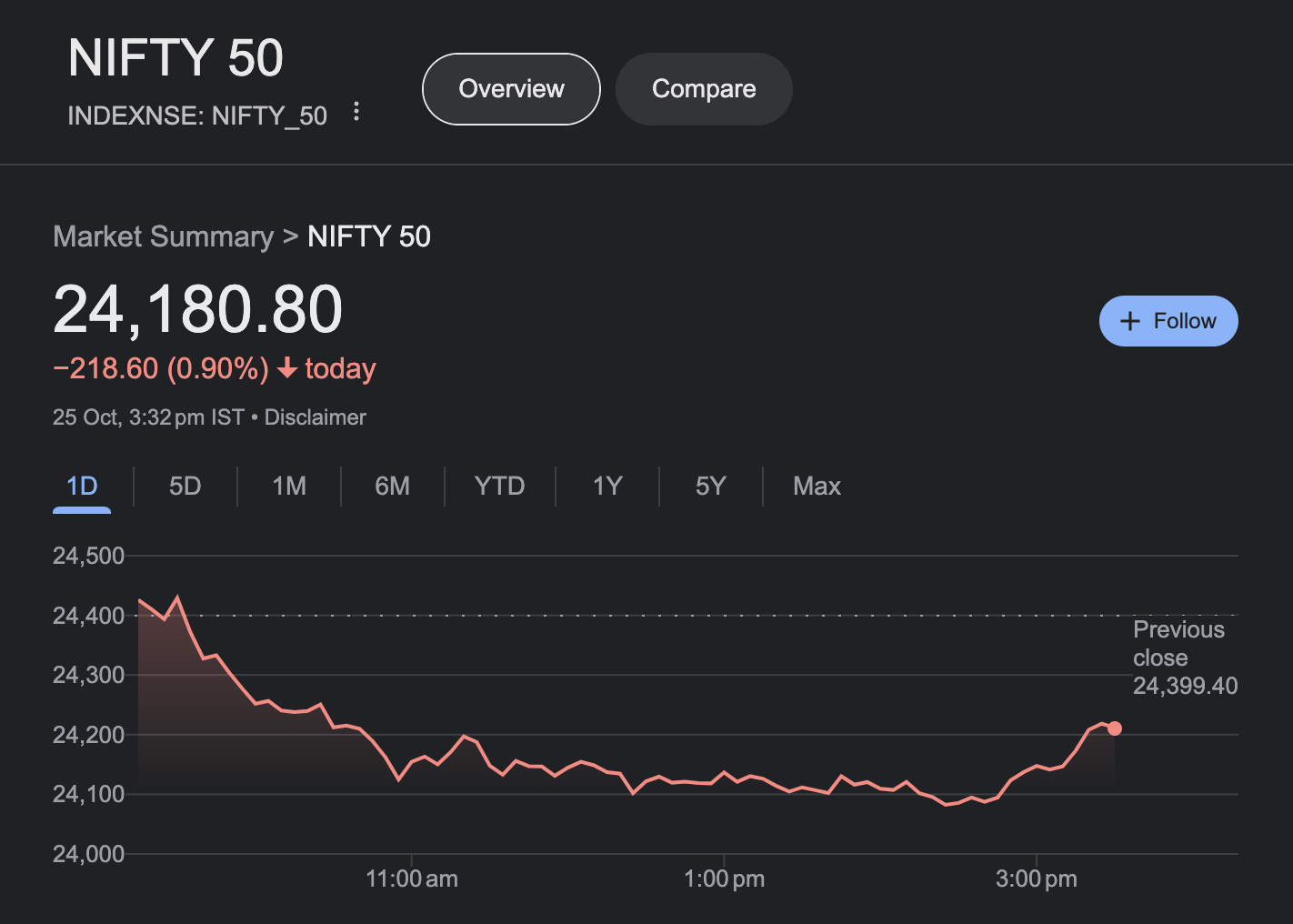Is It Time to Buy? A Market Correction Opportunity for the Savvy Investor
SMID cap stocks are down 30%. Learn why now might be the right time to buy, and how long-term strategies can turn market corrections into opportunities
Back on September 13th, we issued a warning to our clients about the potential for a market correction based on the alarming inability of our systems to identify value opportunities. This red flag suggested that market expectations were exceedingly high, and history shows that such situations often lead to overreactions.
As we anticipated, the correction is now underway, with small and mid-cap (SMID) companies down by 30% and the broader index falling by 7%. For those who heeded our advice, the question now is: is this a good time to buy?
If you’re cautious but looking to enter the market, the following analysis will help guide your decision-making process.
1. Market Sentiment and Overreactions: Understanding the Trend
During periods of heightened valuations, it only takes a small trigger for panic to set in. This panic often leads to sharp sell-offs as investors try to protect their gains. The current decline in SMID cap stocks suggests that the market, as predicted, is overreacting to fear, not necessarily to fundamental issues. Many of these companies have seen price drops unrelated to their long-term growth potential.
When markets overreact, they present buying opportunities for investors who remain calm and focus on fundamentals rather than emotion-driven price movements.
2. Valuation Matters: Re-Entering at Attractive Price Levels
At Craving Alpha, our approach is to seek out value. When our systems flagged a lack of opportunities in September, it wasn’t because good companies weren’t available; it was because their prices were too high relative to their earnings and growth potential. Now, with SMID cap stocks down by 30%, there is a significant chance that some of these high-quality businesses are trading at a discount.
Why This Matters: Corrections can bring valuations back to more reasonable levels. This is the time to re-assess companies with strong balance sheets, solid revenue growth, and long-term potential. Stocks that were once overvalued might now be priced attractively, giving you a chance to build or add to your portfolio at a discount.
3. Diversification: Lowering Risk in a Volatile Market
For investors who are cautious about jumping back into the market, diversification remains key. A diversified portfolio that includes SMID caps, blue-chip stocks, and defensive sectors (like healthcare or utilities) can help mitigate risk. By spreading investments across different industries and market cap sizes, you can take advantage of price dislocations in SMID caps while still hedging against potential further downturns in the broader market.
Actionable Advice: Look for sector leaders in SMID caps that have proven track records of weathering economic uncertainty. Consider adding them to a balanced mix of defensive stocks to limit downside risk.
4. Timing the Market vs. Time in the Market
It’s natural to worry about whether this is truly the bottom of the correction. While attempting to time the market perfectly is tempting, it’s a strategy that has proven time and time again to be extremely difficult, even for professionals. Instead, focus on the long-term opportunities. Investing in high-quality companies at attractive prices now—even if the market continues to drop further—can yield significant returns over time
Investment Strategy Tip: If you’re wary of deploying all your capital at once, consider dollar-cost averaging. This involves investing a fixed amount regularly, regardless of price. This method can reduce the impact of short-term volatility and allow you to build a position gradually.
5. The Importance of Liquidity and Patience
Another factor that investors must consider is liquidity. It’s essential to have cash reserves available during periods of market corrections to take advantage of lower prices. The most successful investors know that patience and liquidity are powerful allies during volatile markets. They wait for opportunities and are ready to strike when valuations become compelling.
Pro Tip: If you were fortunate enough to exit certain positions in response to our warning in September, you should have some liquidity available now. Use this opportunity to carefully pick stocks that fit your investment criteria without rushing into any one position.
6. Key Sectors to Watch Post-Correction
While the broad index is down by only 7%, the more significant declines in SMID cap stocks suggest that these are the areas where value might be found. Industries like technology, healthcare, and energy could present solid investment opportunities, especially in companies with strong cash flows and innovative product lines.
• Technology: Tech companies, particularly those focused on software as a service (SaaS), often have high-growth potential. If these businesses are now trading at a discount, it might be a great entry point.
• Healthcare: The healthcare sector has historically performed well during market downturns, offering a degree of stability and growth. Biotech firms or established pharmaceutical companies that have been impacted by the sell-off could be valuable additions.
• Energy: The energy sector is cyclical but can offer excellent long-term growth. Companies focusing on renewable energy or innovation within the traditional energy space might be worth considering if their valuations have become more attractive.
7. Stay the Course: Market Recovery Isn’t Far Off
Remember that market corrections, while uncomfortable, are a natural part of investing. They clear out excessive speculation and reset valuations to healthier levels. For long-term investors who buy quality companies during these dips, the rewards often outweigh the risks.
Final Takeaway: If you’ve been waiting on the sidelines or built up cash reserves after our September warning, now could be the time to start selectively re-entering the market. Prioritize companies with strong fundamentals, diversified revenue streams, and robust growth prospects. Use strategies like dollar-cost averaging to navigate volatility, and don’t forget to maintain a long-term perspective.
Conclusion
The recent correction was predicted, and for those who took the necessary steps, the opportunity to buy quality assets at lower prices is now present. While uncertainty remains, the ability to focus on the fundamentals, deploy capital strategically, and remain patient will set successful investors apart from the crowd. The market may fluctuate in the short term, but those who build well-structured portfolios now will likely reap the benefits in the long run.







